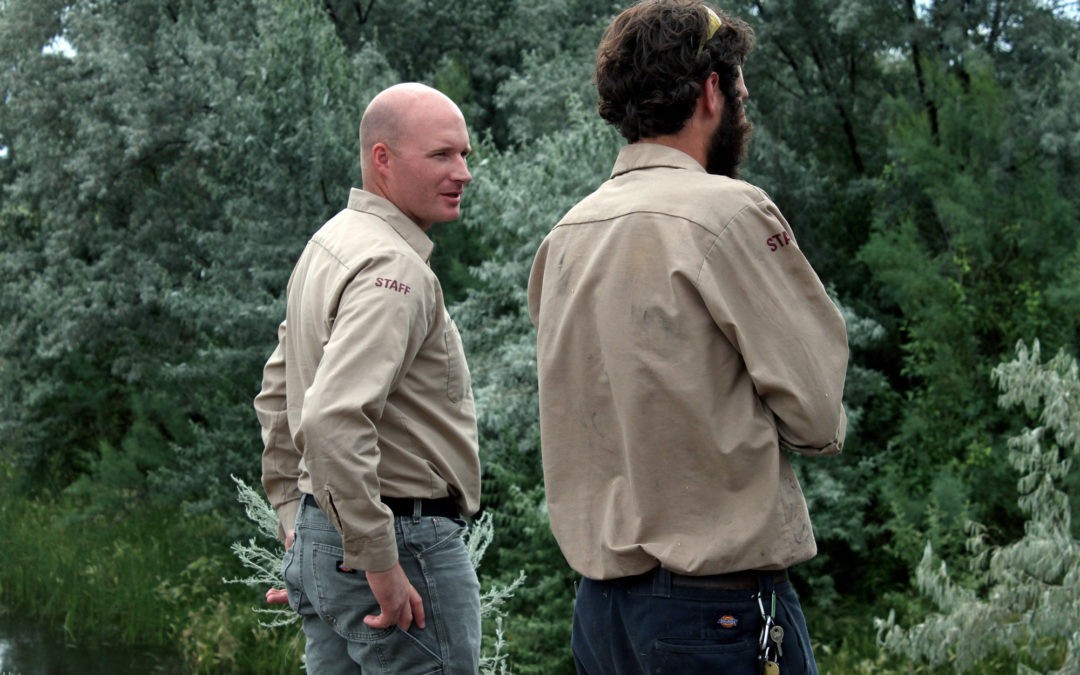Last week our resident photojournalist, Rose, spent some time with ACE Utah (you’ll see more of her travels later in the week). Rose also had the chance to sit down for a chat with Jake Powell, the (quite new) Director of ACE Utah.
Rose: How long have you been working for ACE, and what was your position before you started here?
Jake: I have been with ACE since March 2015. Prior to working with ACE I was the Upper Weber Watershed Coordinator. I worked with private landowners, local governments, Federal and State agencies and Non-profit organizations to do watershed planning, water quality monitoring and improvement projects, and stream restoration and aquatic habitat projects.
What does your position entail?
I see myself as one of the supports to our staff and crew leaders, my job is to make their job more effective. I also see my position as working alongside the Utah staff and Intermountain Region staff to establish a long-term vision for ACE Utah and begin to take strategic steps towards fulfilling that vision.
How has your experience with the organization been so far?
Working with ACE has been amazing. The people that work here as staff and the corps members that come to ACE are inspiring (ACEr: #ACEinspires)! There is so much enthusiasm and passion for the work that ACE does that one can’t help but get engulfed in the ACE culture from the minute you start working here. One of the most impressive things about ACE is its commitment to quality throughout each phase of a project. From the contract, to the work, to the final reports, everyone works incredibly hard to make each detail the best it can be. It is an honor to work for an organization that feels that way about its work.

Explaining the importance of the work the crew is doing, and listing the detrimental effects of the two invasive species in the area, Tamarisk and Russian Olive. These two species use much more water than other native plants. This is harmful to the native vegetation and also means there is less water to flow downstream. Furthermore, few animals will eat Russian Olive and Tamarisk, and since these plants take over riparian areas and diminish native species, the food source of animals is depleted.
Where are you from?
I was born and raised in Highland, Utah.
Why did you get into the conservation field?
I have many cherished memories and had many formative experiences while being outdoors as a young kid. My education exposed me to the reality that human kind has not always been kind to the systems that keep us all alive. I also realized that we have the capacity to engage and improve the natural systems that surround us and that work in conservation was a noble career. I worked as a designer trying to provide those experiences for others in artificial systems for several years but found that working to conserve and improve natural systems was much more satisfying. It is amazing to work in a career that literally makes the world a better place! It also provides an opportunity to work alongside a lot of really amazing, passionate, happy people.
You are really passionate about rivers and watershed maintenance. How does this passion play into your current position?
Water is a fascinating resource that indicates so much about what we value ecologically and socially. It is also something that connects everyone, so I am always fascinated when I observe how water is taken care of, used or abused. Rivers and riparian systems are also the life-blood of the west and so much ecology is packed into them that I think they become fantastic classrooms for our corps members. I am trying right now to develop relationships with more people that do riparian restoration that goes beyond invasive plant removal and gets into restoring stream form and function. I think it would be a great experience for corps members and provide a taste of working in a very complex and interconnected ecological system.
What is your favorite National Park?
My favorite park right now is Sequoia National Park. I love places that warp my sense of scale and help me realize that human beings are a small organism in nature’s grant scheme. Sequoia definitely does that for me.
What’s your favorite food to eat in the backcountry?
Pop tarts! I know that Pop tarts aren’t real backcountry food, nor real food at all, but I am not sure how they pack so much deliciousness into such a small package! The backcountry is a perfect place to celebrate that kind of ingenuity.


